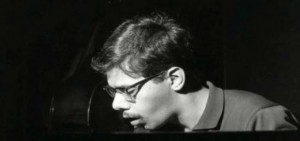Chick Corea, Latin and Classic jazz Artist

This week’s Featured Artist was introduced to the piano at the tender age of four, and grew up in an environment surrounded by jazz. He was influenced by bebop music, and stars such as Charlie Parker, Dizzy Gillespie, Lester Young, Bud Powell and Horace Silver to name a few. Another notable influence in his young life was concert pianist Salvatore Sullo, who helped in guiding his young musical career. He started taking lessons from Salvatore Sullo at the age of eight and was introduced to classical music, which helped to spark his interest in musical composition. Meet pianist, keyboardist, composer and bandleader – Chick Corea
Born in Chelsea, Massachusetts, USA
Genre: Jazz, Jazz-Fusion, Post-Bop, Latin Jazz, Avant-Garde Jazz, Bebop and Classical Music
Born Armando Anthony Corea in Chelsea, Massachusetts on June 12, 1941, he began studying piano at age four. Early on in his development, Horace Silver and Bud Powell were important influences while the music of Beethoven and Mozart inspired his compositional instincts. Chick’s first major professional gig was with Cab Calloway, which came before early stints in Latin bands led by Mongo Santamaria and Willie Bobo. Important sideman work with trumpeter Blue Mitchell, flutist Herbie Mann and saxophonist Stan Getz came before Chick made his recording debut as a leader in 1966 with “Tones For Joan’s Bones”. During these formative years, Chick also recorded sessions with Cal Tjader, Donald Byrd and Dizzy Gillespie.
After accompanying singer Sarah Vaughan in 1967, Chick went into the studio in March of 1968 and recorded “Now He Sings, Now He Sob’s” with bassist Miroslav Vitous and drummer Roy Haynes. That trio album is now considered a jazz classic. This is the disc that cemented Corea’s place in the jazz firmament as a pianist of incomparable skill.
In the fall of 1968, Chick replaced Herbie Hancock in Miles Davis’ band with Ron Carter, Wayne Shorter and Tony Williams. In September of that year, he played Fender Rhodes electric piano on Miles’ important and transitional recording “Files de Kilimanjaro,” which pointed to a fresh new direction in jazz.
Between 1968 and 1970, Chick also appeared on such groundbreaking Davis recordings as “In a Silent Way, Bitches Brew, Live-Evil and Live at Fillmore East. He was also a key player in Davis’ electrified ensemble that appeared before 600,000 people on August 29, 1970 at the Isle of Wight Festival in England (captured on Murray Lerner’s excellent documentary, Miles Electric: A Different Kind of Blue.
Shortly after the historic Isle of Wight concert, both Chick and bassist Dave Holland left Miles’ group to form the cooperative avant-garde quartet Circle with drummer Barry Altschul and saxophonist Anthony Braxton. Though short-lived, Circle recorded three adventurous albums, culminating in the arresting live double LP Paris-Concert recorded on February 21, 1971 for the ECM label. Chick also recorded the trio album ARC with Holland and Altschul, before he changed directions again. His excellent Piano Improvisations, Vol. 1 and 2, recorded over two days in April 1971 for ECM, was the first indication that solo piano performance would become fashionable.
Toward the end of 1971, Chick formed his first edition of Return to Forever with Stanley Clarke on acoustic bass, Joe Farrell on soprano sax and flute,Airto Moreira on drums and percussion and Moreira’s wife Flora Purim on vocals. On February 2 and 3, 1972, they recorded their self-titled debut for ECM, which included the popular Corea composition “La Fiesta.”
A month later, on March 3, 1972, Chick, Stanley, Airto and drummer Tony Williams teamed together as the rhythm section for Stan Getz’s Columbia recording Captain Marvel, which featured five Corea compositions, including “500 Miles High,” “La Fiesta” and the title track. By September of that year, Chick was back in the studio with Return to Forever to record the classic Light as a Feather, a collection of melodic Brazilian-flavored jazz tunes including new versions of “500 Miles High” and “Captain Marvel” along with Chick’s best-known composition, “Spain.” In November of 1972, Chick also recorded the sublime Crystal Silence, his initial duet encounter with vibraphonist and kindred spirit Gary Burton.
By early 1973, Return to Forever added electric guitarist Bill Connors and thunderous drummer Lenny White, and the group was fully fortified to embrace the emerging fusion movement. In August 1973 Hymn of the Seventh Galaxy instantly elevated them to the status of other fiery fusion bands of the day like John McLaughlin’s Mahavishnu Orchestra and the Joe Zawinul-Wayne Shorter-led juggernaut, Weather.
By the summer of 1974, with the 19-year-old speed demon guitarist Al Di Meola replacing Connors in the RTF lineup, the transformation to a bona fide high-energy jazz-rock concert attraction was complete. Hordes of rock fans embraced the group and were able to enter the world of jazz through such important albums as 1974’s Where Have I Known You Before, 1975’s Grammy® Award-winning No Mystery and 1976’s Romantic Warrior, which became the best-selling of the RTF studio albums. The four electric albums are now compiled on the remixed and re-mastered Return to Forever: The Anthology.
During this same period, Chick also turned out two highly personal recordings in 1975’s jazz fantasy concept album The Leprechaun and 1976’s flamenco-flavored My Spanish Heart. A third edition of RTF featured a four-piece brass section along with bassist Clarke, charter RTF member Joe Farrell, drummer Gerry Brown and Chick’s future wife Gayle Moran, who was also a member of Mahavishnu Orchestra, on vocals. Together they recorded 1977’s Musicmagic and the four-LP boxed set RTF Live, which captured the sheer energy and excitement of the full ensemble on tour.
Biographical information courtesy of Chick Corea website
Chick Corea & Elektric Band – Spain (Live At Montreux 2004)
